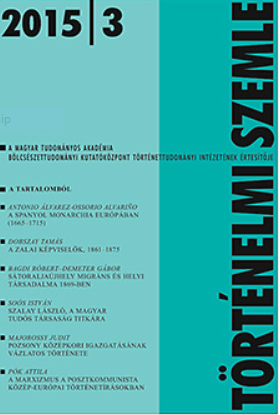Megőrzés és öröklés között: a spanyol monarchia Európában (1665–1715)
Between Conservation and Succession: The Spanish Monarchy in Europe (1665–1715)
Author(s): Antonio Álvarez-Ossorio AlvariñoContributor(s): Tibor Martí (Translator)
Subject(s): Political history, 17th Century, 18th Century
Published by: Magyar Tudományos Akadémia Bölcsészettudományi Kutatóközpont Történettudományi Intézet
Keywords: The Spanish Monarchy in Europe; 1665–1715; history; governance;
Summary/Abstract: The government of the Spanish Monarchy during the reign of Charles II was a political laboratory for some European monarchs in the first decades of the 18th century. An example of this was the Council of Italy, which was replicated in Barcelona in the court of Archduke Charles (Charles III of Spain), in Turin while the House of Savoy administered the kingdom of Sicily, and in Vienna in the three Italian territories which were governed by the House of Austria. The political system of the court of Charles II was a complex mix with different elements such as respect for the provincial constitutions and liberties, the preservation of the role of the councils, the strengthening of the secretary of the despacho universal, the relevant role of the high aristocracy (grandes de España) in the management of the government and the appearance of new paradigms such as the fostering of trade and commerce. This political system left a profound impression on the government of the monarchy´s European provinces when these territories were handed over to the House of Austria and became part of the empire of Charles VI, after the treaty of Utrecht. The propagandists for Charles VI emphasized the dynastic and legal continuity with the reign of Charles II. The political thought of the austracistas (the Spanish ministers who governed in Vienna and Habsburg territories) adopted some ideas from this system for the project for a new Spain. Hence, the executive profile of the monarchy of Philip V also had precedents in the times of Charles II, for example the rise of the secretaries, the creation of the Royal Guard and the imposition of the new political system (Nueva Planta). This circulation of political models was possible through the mobility of important ministers and secretaries of Charles II who later carried out their duties during the reigns of Philip V of Spain and emperor Charles VI.
Journal: Történelmi Szemle
- Issue Year: 2015
- Issue No: 03
- Page Range: 351-362
- Page Count: 12
- Language: Hungarian

